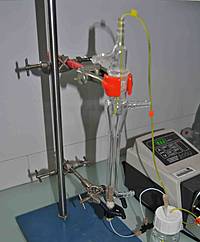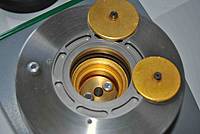
OECD 105
Water solubility
The water solubility of a substance is the saturation mass concentration of the substance in water at a given temperature.
The test is preferably run at 20 ± 0,5 °C.
The column elution method is suitable for solubilities below 10-2 g/L. The test substance is eluted from a micro-column which is charged with quartz sand, previously coated with an excess of the test substance. The water solubility is given by the mass concentration of the eluate when this has reached a plateau as a function of time.
The flask method is suitable for solubilities above 10-2 g/L. Water is brought at a temperature above the test temperature and added with an excess of the test substance. When saturation is achieved, the mixture is cooled down to the test temperature and the mass concentration in the aqueous solution is measured.
Our company
PHYTOSAFE
2 rue Marx Dormoy
64000 Pau
FRANCE
Tél : +33 (0)5 59 84 79 91
Fax : +33 (0)5 59 84 80 55
Email : contact@phytosafe.com
Terrestrial ecotoxicology
Acute toxicity to earthworms
Our company
PHYTOSAFE
2 rue Marx Dormoy
64000 Pau
FRANCE
Tél : +33 (0)5 59 84 79 91
Fax : +33 (0)5 59 84 80 55
Email : contact@phytosafe.com
Terrestrial ecotoxicology
OECD 112
Dissociation constants in water
The dissociation is the reversible splitting into two or more chemical species which may be ionic.
Titration methods are classically performed at Phytosafe: a known amount of substance is titrated with standard acid or base, as appropriate.
The study aimed at the determination of the pKa values which predict whether the substance will ionize at environmental pH levels (that are generally 7 and lower) or not.
Our company
PHYTOSAFE
2 rue Marx Dormoy
64000 Pau
FRANCE
Tél : +33 (0)5 59 84 79 91
Fax : +33 (0)5 59 84 80 55
Email : contact@phytosafe.com
Terrestrial ecotoxicology
Acute toxicity to earthworms
Our company
PHYTOSAFE
2 rue Marx Dormoy
64000 Pau
FRANCE
Tél : +33 (0)5 59 84 79 91
Fax : +33 (0)5 59 84 80 55
Email : contact@phytosafe.com
